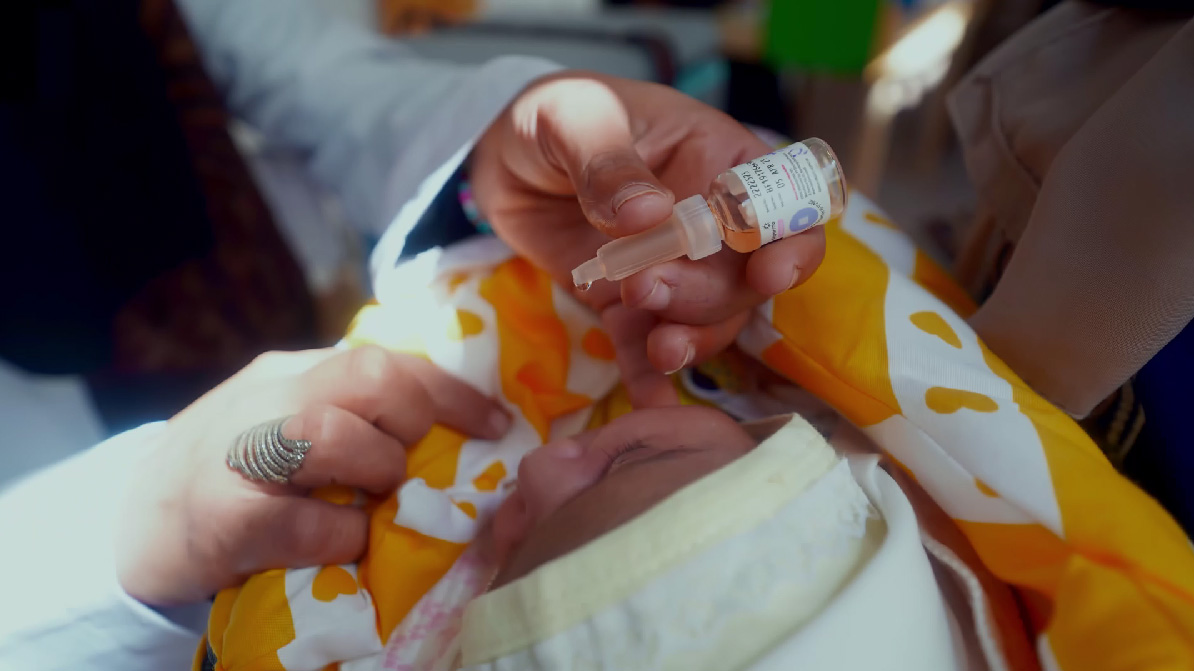 25 April 2024 – As long as a single child is infected with polio, all unvaccinated children are at risk of contracting the disease. In fragile and conflict-affected contexts, such as Yemen, children can be especially vulnerable. From 2021 to 2023, Yemen reported 237 variant poliovirus type 2 cases – from both circulating vaccine-derived poliovirus type 2 (cVDPV2) and vaccine-derived poliovirus type 2 (VDPV2).
25 April 2024 – As long as a single child is infected with polio, all unvaccinated children are at risk of contracting the disease. In fragile and conflict-affected contexts, such as Yemen, children can be especially vulnerable. From 2021 to 2023, Yemen reported 237 variant poliovirus type 2 cases – from both circulating vaccine-derived poliovirus type 2 (cVDPV2) and vaccine-derived poliovirus type 2 (VDPV2).
“We didn’t know we were supposed to take [our children] to the hospital to get vaccinated, and I wasn’t aware of the seriousness of these diseases or thinking that any of my children would get sick,” said a mother whose child contracted polio in 2021 and is now paralysed.
One in 4 children in Yemen cannot receive all the recommended vaccinations on the national routine immunization schedule. Indeed, 17% of Yemen’s children are considered zero-dose children – they have received no doses of vaccine. Low vaccination coverage, and increased vaccine hesitancy among parents are among the many factors that contribute to this situation.
Early on 25 February 2024, about 6700 fixed and mobile vaccination teams set out to reach nearly 1.3 million children aged under 5 years with the novel oral polio vaccine type 2 (nOPV2). Working from health facilities and on the streets of the 12 target governorates, the teams were determined to give children the 2 drops of vaccine needed to protect them from the debilitating disease.
Fig. 1. Geographic distribution of laboratory-confirmed variant poliovirus type 2 cases (2021–2023)
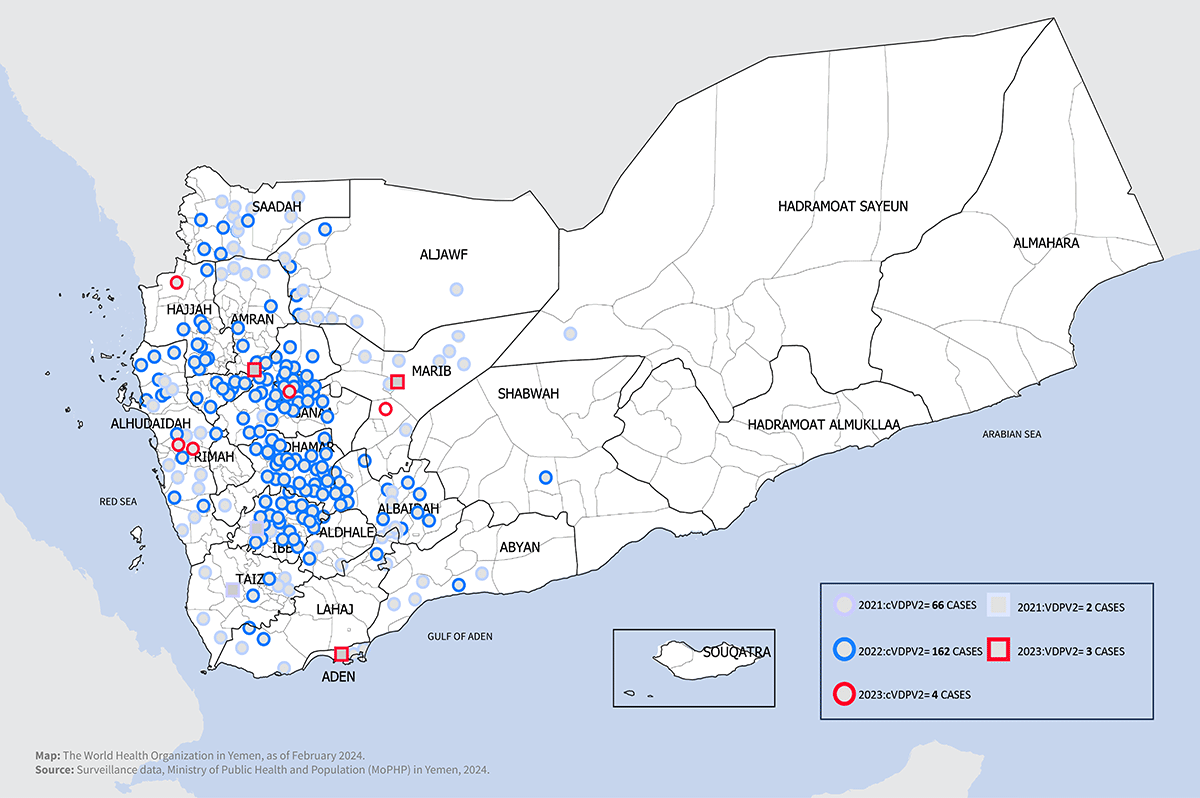 Disclaimer: The boundaries and names shown and the designations used on this map do not imply the expression of any opinion whatsoever on the part of the World Health Organization concerning the legal status of any country, territory, city or area or of its authorities, or concerning the delimitation of its frontiers or boundaries.
Disclaimer: The boundaries and names shown and the designations used on this map do not imply the expression of any opinion whatsoever on the part of the World Health Organization concerning the legal status of any country, territory, city or area or of its authorities, or concerning the delimitation of its frontiers or boundaries.
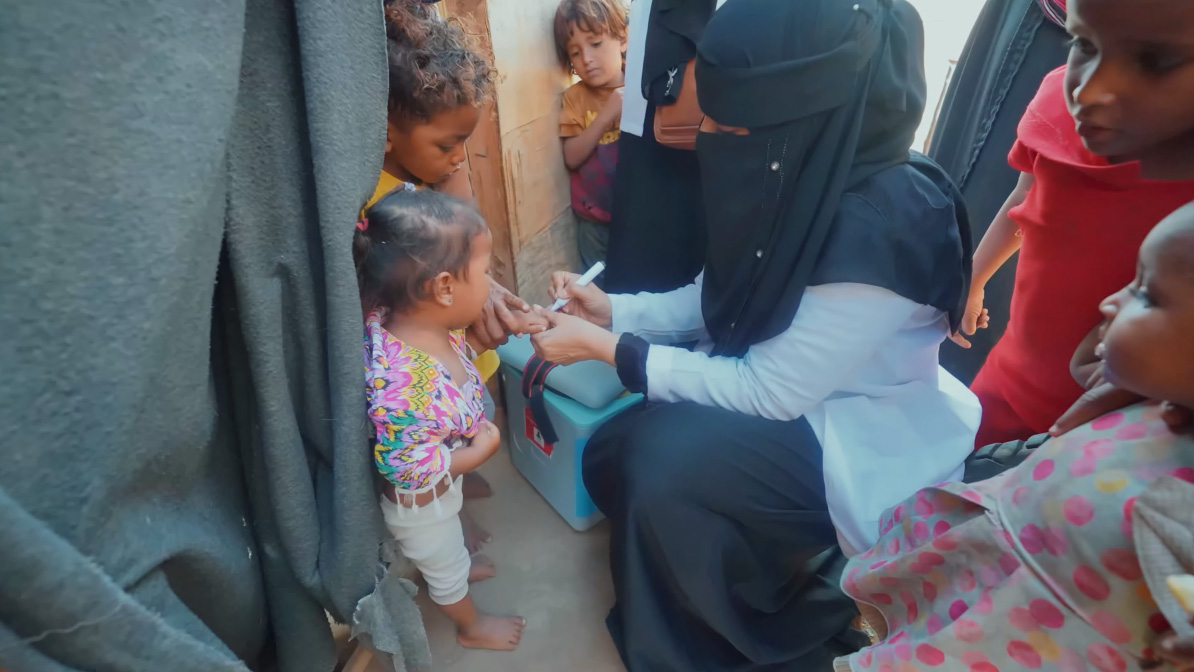
Carrying vaccine coolers, the vaccination teams travelled the roads of the targeted cities, their crumbling alleys a sign of the decade of conflict that has affected Yemen. Some areas were easy to access, but others involved arduous journeys to reach vulnerable children.
On the outskirts of cities, congested camps of internally displaced people reflect the impact of the protracted conflict. Dwellings are made of boards and old rugs, and access to safe water, sanitation and hygiene is lacking. Many of the families in the camps once had settled homes; their future is now uncertain.
Mobile vaccination teams find many deprived children as they go door to door, but sometimes the biggest challenge is to convince parents to vaccinate their children. Parents and caregivers are usually positive when teams approach them. But there is increased vaccine hesitancy and refusal among families affected by misinformation coupled with limited health literacy. This has left many children unprotected.
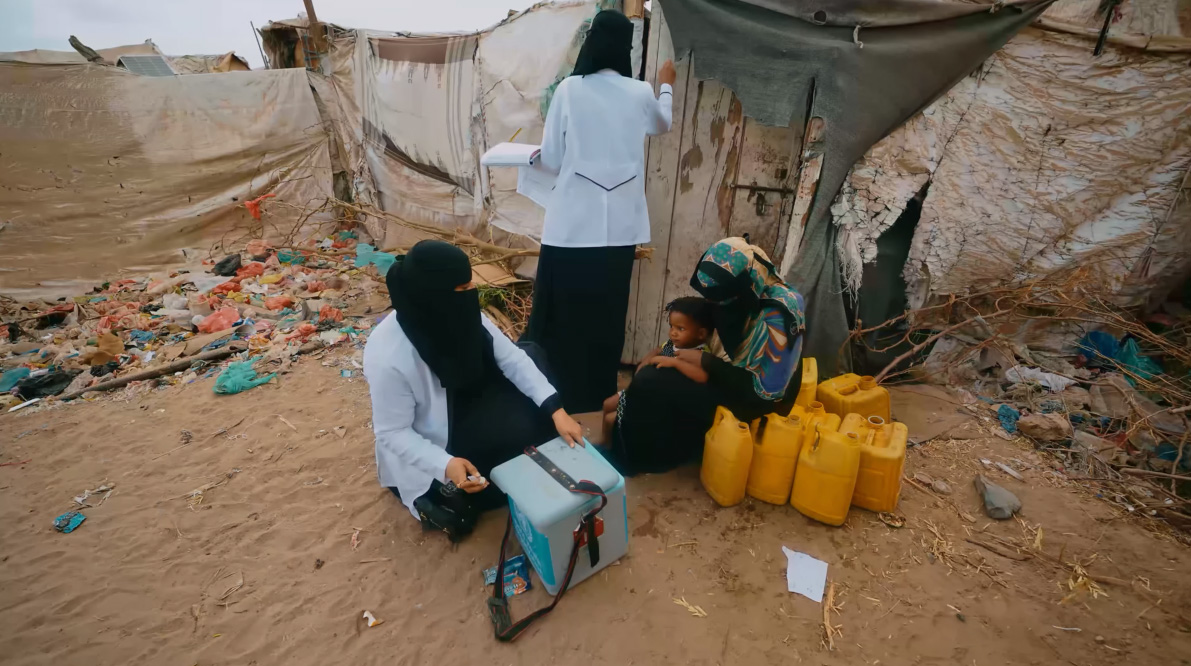 There is no cure for polio; it can only be prevented. The impacts of the conflict and adverse socioeconomic conditions have left many children in Yemen susceptible to the disease.
There is no cure for polio; it can only be prevented. The impacts of the conflict and adverse socioeconomic conditions have left many children in Yemen susceptible to the disease.
It is only thanks to parents who wait in long lines at health facilities and vaccination teams who travel long distances to vaccinate children that Yemen’s polio outbreak is not more widespread.
Yemen's Ministry of Public Health and Population carried out the polio immunization activities as part of a national immunization campaign funded by the Global Polio Eradication Initiative and supported by WHO and the United Nations Children’s Fund (UNICEF).
In total, the campaign reached 1.29 million vulnerable children across the 12 governorates. Teams delivered the polio vaccine to the doorstep of every home, shelter and camp in fragile communities to protect children’s health and future. The independent post-campaign monitoring data show that 91% of targeted children were reached during the supplementary immunization activity, with coverage by governorate ranging from 86% to 99%. Refusal was the main reason for children missed during the campaign.
Fig. 2. Immunization coverage rate in targeted governorates (25–28 February 2024)
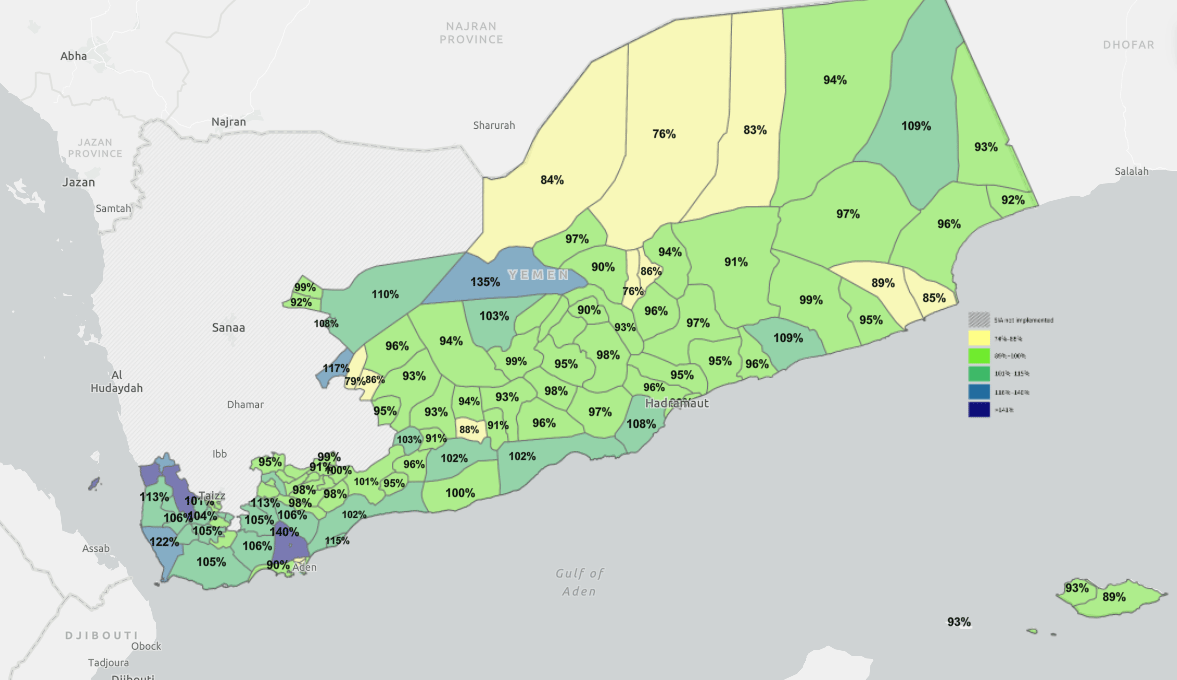
Multiple doses of polio vaccine offer the best protection to children, especially those living in fragile and conflict-affected settings. The Ministry, WHO and partners will take the lessons learned from this campaign and work with health workers to deliver another vital round of polio vaccine to these same communities in the coming months.








